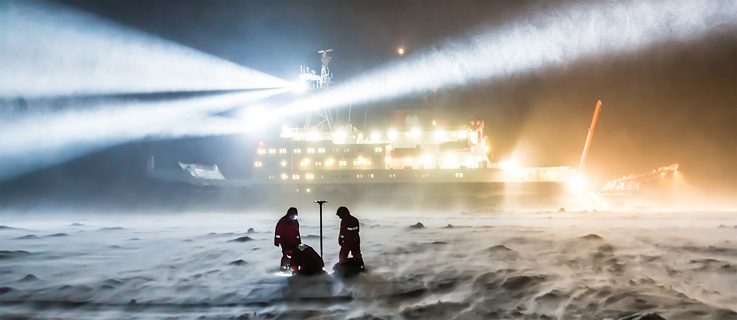In September 2019, the German research vessel Polarstern will depart for the Arctic to drift with the sea ice for a year. 600 scientists from 17 nations on board will study the dwindling, not-so-permanent ice pack.
Icebreaker Polarstern is not easily driven off course. The ship sails through 1.5-meter-thick ice with ease. For ice a few meters thick, the captain gives the German research vessel a running start to ram a path through the Arctic seas. The Polarstern has already plied the icy waters of the South Pole and its northern counterpart. Now the crew is gearing up for an unprecedented voyage.
The largest Arctic expedition of all time will start in September 2019 in Tromsø, Norway, when the Polarstern sets out for the Arctic Ocean where, frozen fast, it will drift along with the ice for a year. There will be plenty of movement on board though as researchers collect data for climate and environmental research. They will spend the winter in the endless darkness of the long polar night when the Arctic is an even more hostile environment than in the sun-lit months. 600 scientists from 17 nations will work on rotation while several additional icebreakers and airplanes keep them well-supplied; helicopters, snowcats and snowmobiles will transport people and material.
Expensive research in the cold
The one-year Multidisciplinary drifting Observatory for the Study of Arctic Climate (MOSAiC) project has a budget of 120 million euros. Experts from the Alfred Wegener Institute (AWI) in Bremerhaven just finished testing special suits for the voyage designed to keep the wearer from freezing to death or being dragged into the depths if they tumble into the icy waters. Researchers plan set up camp on an ice floe and set up a many-kilometre monitoring system.
“The findings from the MOSAiC expedition will take our knowledge of the Arctic to a new level,” German Research Minister Anja Karliczek emphasises. Based on the Germany’s North Sea coast, the AWI is spearheading the polar mission and the German Ministry of Education and Research is providing the majority of the funding.
Experts hope to gain new insight into the earth’s changing climate in particular. Expedition leader Markus Rex notes that our climate is dependent on “what happens in the weather epicentre of the Artic.” As the polar ice grows thinner, more heat from the ocean reaches the surface and the atmosphere - which in turn contributes to warming the Arctic and thus also has an impact on the climate in North America, Europe and Asia. One of the goals of the expedition is to better understand the processes in the ocean, sea ice and the atmosphere and their interactions. “Today’s climate models do not fully reflect the dramatic warming taking place in the Arctic, and climate projections for the region are tremendously speculative,” Rex explains.
-
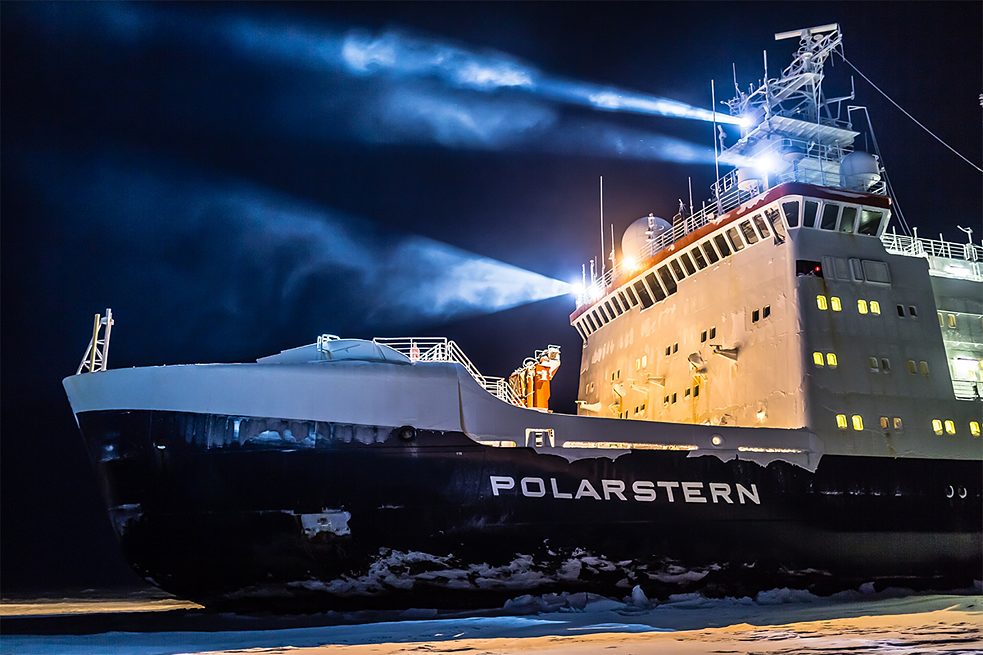 Photo: © MOSAiC/Stefan Hendricks
Photo: © MOSAiC/Stefan Hendricks
The Polarstern in action: In September 2019, the research vessel will set a course to drift with the Artic sea ice for a year.
-
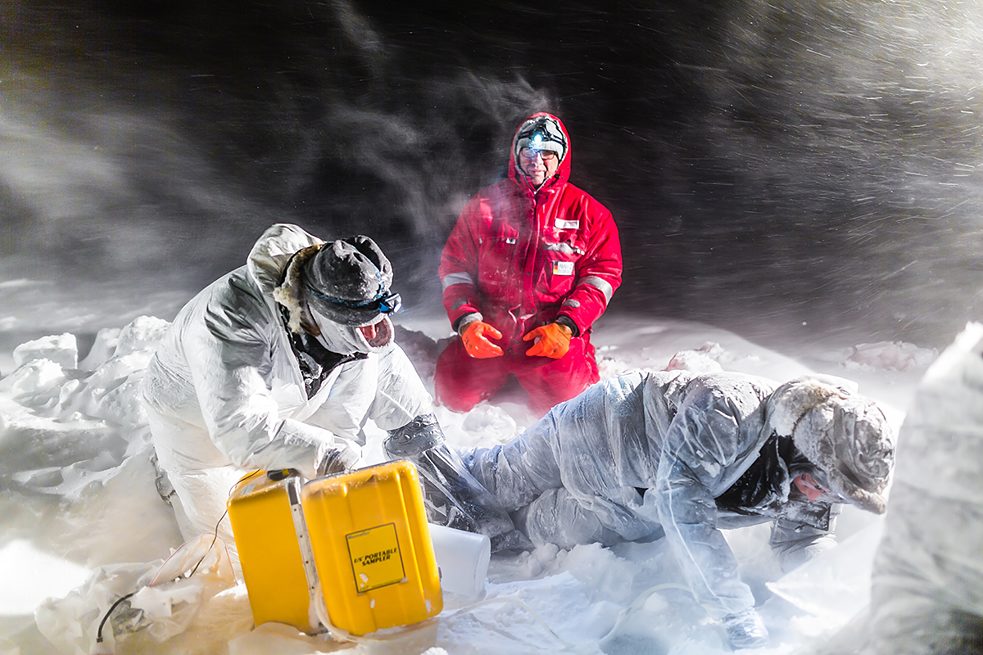 Photo: © MOSAiC/Stefan Hendricks
Photo: © MOSAiC/Stefan Hendricks
600 scientists from 17 nations plan to gather data for climate and environmental research.
-
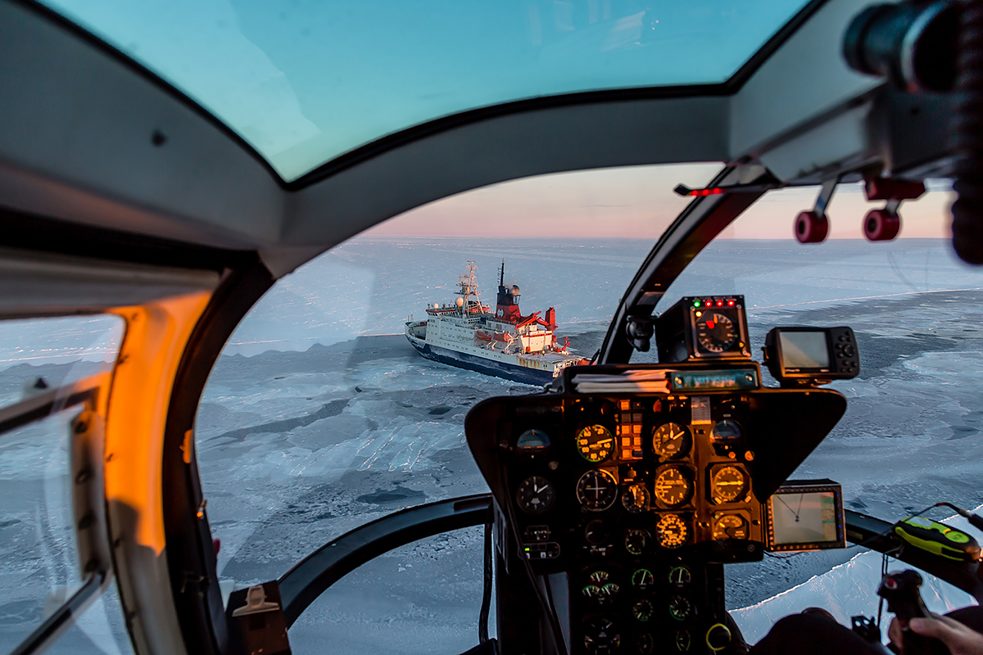 Photo: © MOSAiC/Stefan Hendricks
Photo: © MOSAiC/Stefan Hendricks
Three additional icebreakers and airplanes will keep the team supplied; helicopters, snowcats and snowmobiles will transport people and material.
-
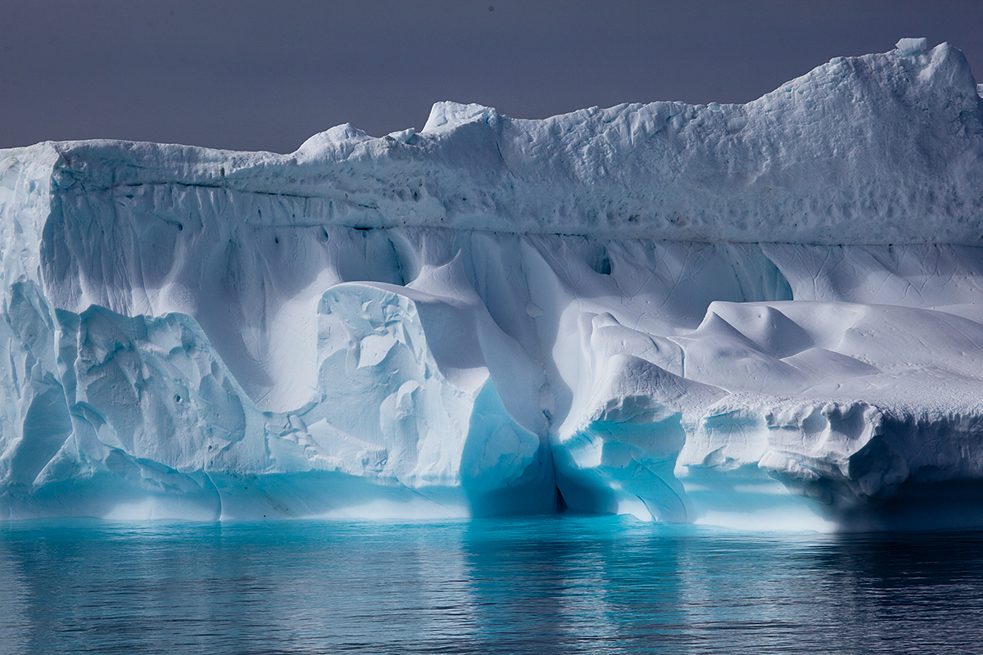 Photo: © MOSAiC/FRoedel
Photo: © MOSAiC/FRoedel
One of the goals of the expedition is to better understand the processes in the ocean, sea ice and the atmosphere and their interactions.
-
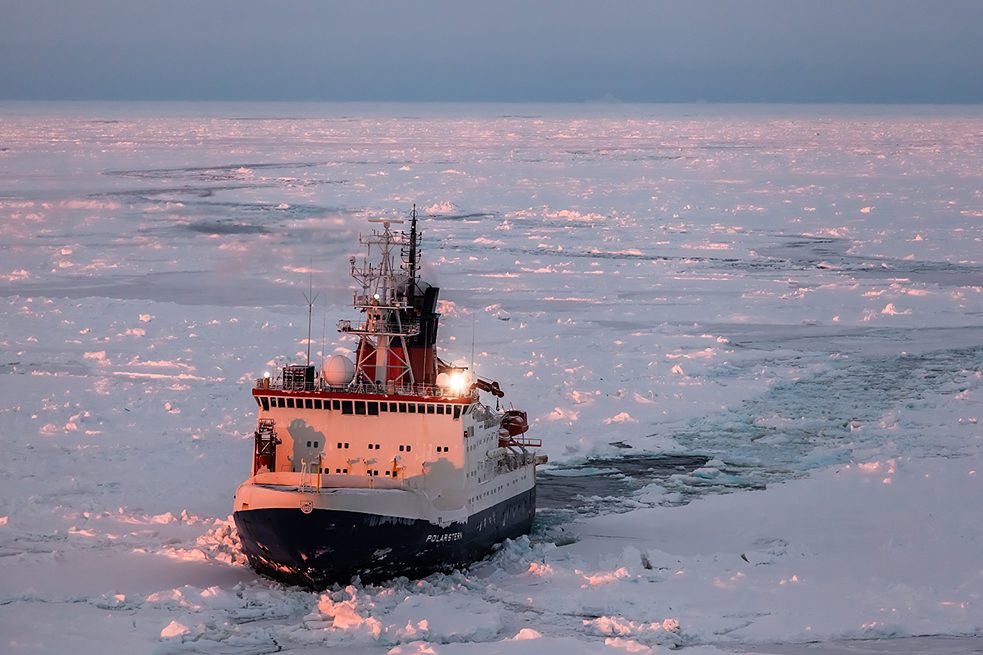 Photo: © MOSAiC/Mario Hoppmann
Photo: © MOSAiC/Mario Hoppmann
The project is the largest Arctic expedition ever undertaken.
Possible conflicts in the Arctic
Germany is active in scientific research at both poles and, together with France, operates a research station in the world’s northernmost village, Spitsbergen. At the South Pole, Neumayer Station III has been open to scientists for a decade. Although climate research is the most important driving force behind these activities, the German government also has a political interest in the Arctic and no fewer than five ministries are involved. The key issues at hand are the raw materials and new shipping routes that melting ice will make accessible in future, environmental protection, economic opportunities and defence aspects.
The German Federal Intelligence Service (BND), responsible for reconnaissance abroad, also keeps a close eye on activities in and around the North Pole. “The largely uninhabitable Arctic has the potential to become a conflict region of the future,” the BND has explained. There are conflicting ownership claims from the neighbouring states to the presumably resource-rich area that have not yet been conclusively clarified. About half of the 20 million square kilometres of the Artic lie on a continental shelf, giving coastal states some sovereign rights to exploit the resources in this area.
Germany has no political decision-making power in the Arctic; this is primarily a matter for the direct and indirect neighbouring states represented in the Arctic Council: Russia, Norway, the USA, Canada, Denmark, Sweden, Iceland and Finland. Germany only has observer status and is in favour of the environmentally friendly and sustainable use of the opportunities this vast region has to offer. The North Polar Region is also economically interesting. German companies purchase oil and gas from Norway and Russia, and are also involved in the mechanical engineering side of raw material extraction.
